We’ve completed our second full rotation of the twelve classes in the Player’s Handbook, not to mention taken a deep dive into the first 5 levels of D&D’s thirteenth class, the inventive and arcane Artificer! This wave of the Class 101 series will appraise every subclass within the Player’s Handbook and break down each subclass’s strengths, weaknesses, thematic elements, and everything else a player would want to know before playing that subclass. Because of this, you will need to own the Player’s Handbook (or purchase the subclass a la carte on the Marketplace) in order to make full use of this series.
The monk is an acrobatic warrior that excels at hit-and-run tactics. However, their monastic training has given them ability to manipulate ki, a magical power that flows through all things. Monks who follow the Way of Shadow can manipulate the ki within their body to manipulate the shadows, and even meld their physical form with the darkness. These monks need not be unwholesome characters, but some monasteries that train their pupils in the Way of Shadow are secretly fronts for thieves’ guilds or clandestine families of assassins.
Check out other articles in the Monk 101 series, like our broad overview in Monk 101: A Beginner’s Guide to Mystical Combat, Monk 101: Way of the Open Hand, and Monk 101: Way of the Four Elements. If you’re interested in playing other classes, check out the entire Class 101 series.
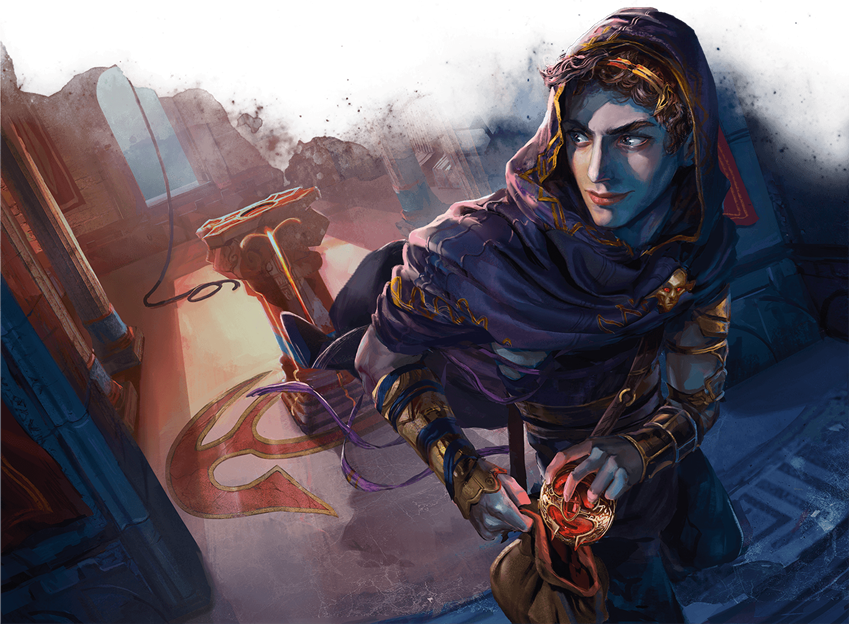
Story of the Way of Shadows
“You’ve seen her, haven’t you?” a panicked soldier asked his companion. The two watchmen walked together down the stone halls of an outpost in the midst of a mountain pass. They were both dressed in worn but well cared-for lamellar armor, and peered from beneath their stout iron helmets at the snow-blanketed field between the outpost’s two defensive towers.
“This shadow of yours, again?” the other soldier replied, sighing. “No, and no one else in the garrison has, either.”
“Then how do you explain the disappearances?” the first soldier said. His voice prickled with irritation. How dare the rest of his companions be so dismissive of three disappearances in the past week. “People don’t just disappear!”
“They’re deserters,” the second said, waving a hand. “We’ve had deserters before, and they leave in packs. The commander will find them.”
“These were loyal men!” the first hissed. “And no one could find any tracks in the snow. They didn’t desert, they disappeared!”
The second soldier scoffed, and didn’t respond. They walked in silence for a few seconds more, passing under the long shadow of the defensive wall. Three other guards walked atop the wall, their gazes affixed on the narrow pass beyond the fortress.
“I don’t know,” he eventually said, shrugging his shoulders. “If it’s really bothering you, I can see if the commander will launch an internal investigation. Maybe we can figure out why these men went missing.” The first soldier had just exited the shadow of the wall, and kept walking until he realized his partner had made no sound. He stopped walking, and found that he didn’t hear the sound of his friend’s footsteps behind him. His eye twitched as he turned around. No one was there. No body, no blood. His partner’s footsteps simply ended.
The soldier’s pulse pounded, and he started gulping down breath as he turned around to look across the snowy field. No one. Not by the closest tower. Not by the far tower—no. There was a flicker of movement! Someone had just turned ‘round the first tower, with a shape slung over their shoulder. A body! He blinked his eyes, and the sight was gone. He dashed over to the base of the first tower, running parallel to the tracks he and his partner had made just seconds before. When he reached the point where he had seen the shadow, he found nothing. Just as before, no tracks. Nothing at all.
The soldier, his chest heaving, his eyes watering, looked out into the swirling flurries of snow, and screamed.
Way of Shadows Features
A monk’s monastic tradition typically grants them additional ways to use their ki points to create mystical effects. Monks who follow the Way of Shadow use their own ki manipulate light and darkness, and sight and sound, to make themselves all but undetectable. The monk gains access to four subclass features at 3rd, 6th, 11th, and 17th level. You can read all of the Way of Shadows features in the Player’s Handbook. In summary, your subclass features allow you to:
- Cast a number of stealthy spells by spending ki.
- Teleport between nearby areas of dim light or darkness.
- Become invisible while in dim light or darkness.
- Strike creatures that your allies have distracted with their own attacks.
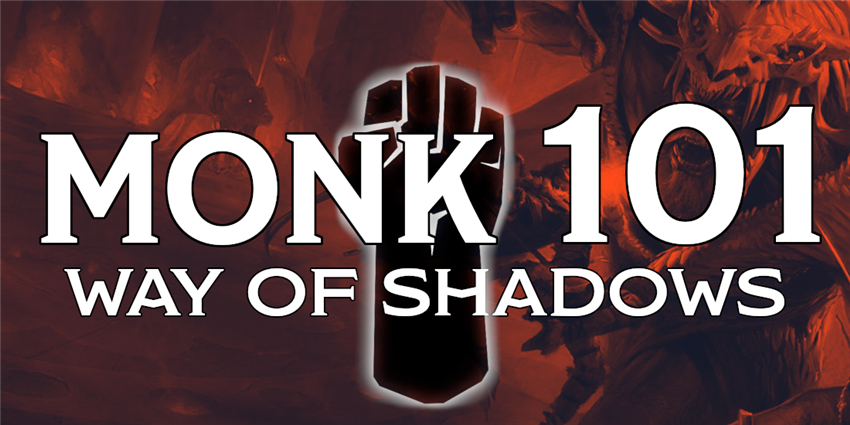
Benefits of the Way of Shadows
The Way of Shadows is a highly thematic subclass that turns the already acrobatic and stealthy monk into silent infiltrator. Unlike the rogue’s Assassin archetype, the Way of Shadows doesn’t grant the monk any raw damage boosts like Sneak Attack or Assassinate. Instead, this subclass grants features that use magic to improve the monk’s stealth, as well as their already impressive mobility. Thanks to class features like Stunning Strike and Flurry of Blows, the Way of Shadows monk works best as stealthy skirmisher who can leap out of hiding, stun foes so that their other allies can tear them down, and then disappear and do it all over again.
Once you reach 11th level and you’ve gained your most potent offensive class features, you can make use of a powerful combat loop—as long as you’re in an area with plenty of shadows or darkness. Start by lurking invisibly in dim light or darkness with your Cloak of Shadows feature, attack an enemy with Stunning Strike, then use a bonus action to teleport to another area of dim light. These abilities work best when you can control where the darkness is, allowing you to set traps and control the flow of your ambush.
Your ability to spend ki to cast darkness is mostly useful as a getaway tool to block your enemies’ line of sight. It’s hard to use as an ambush tool, because you must be able to see the point you want to teleport to using your Shadow Step feature. Unless you gain an alternate form of vision such as blindsight or tremorsense, or the ability to see through magical darkness (such as by multiclassing to gain the Devil Sight warlock invocation), you can’t actually see the point within magical darkness that you want to teleport to. If you do have any of these extraordinary sensory abilities, your ability to cast darkness explodes in utility, especially if you have other party members who can create areas of darkness or dim light, too, either by extinguishing light sources (either manually or with spells like prestidigitation), or by casting darkness themselves.
Drawbacks of the Way of Shadows
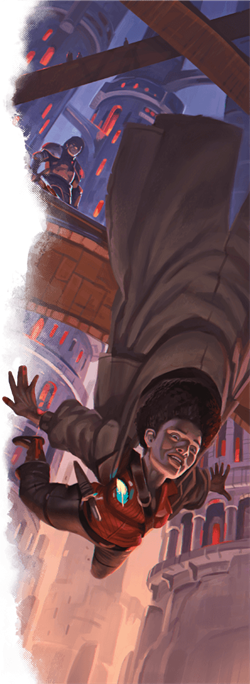 Monks who follow the Way of Shadows are excellent team players. Their most tremendous strength is their ability to move vast distances thanks to their bonuses to speed, plus their ability to teleport between shadows, making them unparalleled infiltrators—but mobility isn’t enough to win battles. If an infiltration goes sideways, or a Way of Shadows monk has no choice but to help their less-stealthy allies in a battle, then they’ll need to find a way to take out their foes, rather than evading them.
Monks who follow the Way of Shadows are excellent team players. Their most tremendous strength is their ability to move vast distances thanks to their bonuses to speed, plus their ability to teleport between shadows, making them unparalleled infiltrators—but mobility isn’t enough to win battles. If an infiltration goes sideways, or a Way of Shadows monk has no choice but to help their less-stealthy allies in a battle, then they’ll need to find a way to take out their foes, rather than evading them.
As mentioned above, all monks gain an immensely powerful combat ability at 5th level: Stunning Strike. This helps them contribute to battles without dealing vast amounts of damage by making their enemies vulnerable for their allies to counterattack. In order to make the most of their ability to get in, stun foes, and get out unseen, Way of Shadow monks need heavy-hitting allies by their side to capitalize on their ambushes. Excellent allies to a Way of Shadows monk include Circle of the Moon druids (since they can transform into creatures with blindsight like the giant constrictor snake), Hexblade warlocks (thanks to high melee damage plus the Devil’s Sight invocation), and Assassin rogues (who can be just as stealthy as a Way of Shadows monk).
If you have a party who’s willing to work as a team and play to the strengths of your skillset, the Way of Shadows can vastly improve your party’s stealthiness and its raw destructive power. One last concern: if your DM doesn’t actively think about and include pools of dim light in their dungeons or combat arenas, you might have a bad time. Talk to your Dungeon Master if you want to play this subclass, and ask them to think about the way their dungeons are lit, since you’ll often be at the mercy of where to find light and shadow.
Suggested Build
Like most classes in D&D, the monk doesn’t choose their subclass until 3rd level. If you’re playing a monk from 1st level and think you want to follow the Way of Shadows later, you should choose a race that improves your Dexterity, Constitution, or Wisdom—ideally two of the three. Dexterity will make your attacks stronger and more accurate, Constitution will grant you more hit points, which will help you last longer on the front lines, and Wisdom will increase your Armor Class and make it harder for foes to resist your martial abilities.
Wood elves gain a bonus to both Dexterity and Wisdom, making them agile and cunning martial artists—and drow are thematically perfect shadowdancing assassins. Likewise, stout halflings gain a bonus to both Dexterity and Constitution, making them nimble but durable skirmishers. A hill dwarf would make an unusual but fascinating tough-as-nails Way of Shadows monk, thanks to their bonuses to Constitution and Wisdom. And, as always, humans gain either a small bonus to all ability scores, or can gain a feat by taking the “variant human” race, making them more flexible in their builds.
 As usual, your character’s background is up to you. You can make your character more unique by choosing unusual backgrounds like Soldier, creating a former military assassin who found enlightenment in a shadowy monastery, and fell back into their old ways of silent death. Or, you could create a more archetypal character by choosing a background like Hermit, representing someone who has lived in solitary contemplation of the multiverse’s darkness for years.
As usual, your character’s background is up to you. You can make your character more unique by choosing unusual backgrounds like Soldier, creating a former military assassin who found enlightenment in a shadowy monastery, and fell back into their old ways of silent death. Or, you could create a more archetypal character by choosing a background like Hermit, representing someone who has lived in solitary contemplation of the multiverse’s darkness for years.
Choose EQUIPMENT instead of GOLD at the end of character creation. Choose a shortsword or another simple melee weapon of your choice that doesn't have the heavy or two-handed property. Thanks to your Martial Arts feature, you can add your Dexterity modifier to attack and damage rolls with most simple weapons, rather than your Strength modifier.
You won’t choose your subclass until you reach 3rd level as a monk, so use this time as a 1st- and 2nd-level monk to figure out if the Way of Shadows is really the right path for you. Are you enjoying the fantasy of being a stealthy infiltrator? Do you feel like you need more martial artistry in your game, and would prefer to be a monk of the Way of the Open Hand? Or are you learning that you want to use explosive magic, and would prefer to wield the power of the Way of the Four Elements?
Feats
 Once you’ve improved your Dexterity score to 18 or 20, you can increase your power with a few useful feats. The following feats are good picks for Way of Shadow monks, and will improve your reliability in your own desired area of expertise:
Once you’ve improved your Dexterity score to 18 or 20, you can increase your power with a few useful feats. The following feats are good picks for Way of Shadow monks, and will improve your reliability in your own desired area of expertise:
Alert. Gaining a bonus to initiative is nice, but it’s actually the third benefit of this feat that interests you most. Since you’ll often be in areas of darkness—especially hard-to-pierce magical darkness—you’ll often be fighting foes in darkness, too. Usually this means you and your foes will be making attack rolls as normal (advantage from being unseen, canceled out with disadvantage from being effectively blinded). However, this feat means that you’ll be making attacks as normal, but your foes must attack you with disadvantage (since they no longer get advantage from being unseen).
Actor. A Way of Shadows monk is a skilled infiltrator without too much raw damage. If you get caught, your best bet might be to talk your way out of it—or at least buy your allies enough time to reach you and eliminate the brute that’s cornered you.
Mobile. Monks are already highly mobile thanks to the Unarmored Movement feature, but being able to make attacks and still avoid opportunity attacks while dashing through the battlefield is hard to pass up.
Resilient (Wisdom). If you’re playing a low-level campaign, this feat is incredible. Gaining proficiency in Wisdom saving throws and increasing your own Wisdom score by one is great. If your campaign goes to 14th level or higher, though, this feat is mostly dead weight, since you gain proficiency in all saving throws once you gain the Diamond Soul feature at 14th level.
Skulker. This feat is useful for anyone who wants to go unseen, and the ability to miss attacks without breaking stealth and seeing more easily in dim light will elevate your infiltration abilities to dizzying heights.
If you want more advice for building a monk, check out Monk 101. Have you ever played a Way of Shadows monk? What advice would you give to players that want to play this subclass?
Next week, get ready to claim sweet revenge against all who have wronged you in Paladin 101: Oath of Vengeance!
Create A Brand-New Adventurer Acquire New Powers and Adventures Browse All Your D&D Content
 James Haeck is the lead writer for D&D Beyond, the co-author of Waterdeep: Dragon Heist, Baldur's Gate: Descent into Avernus, and the Critical Role Explorer's Guide to Wildemount, a member of the Guild Adepts, and a freelance writer for Wizards of the Coast, the D&D Adventurers League, and other RPG companies. He lives in Seattle, Washington with his fiancée Hannah and their animal companions Mei and Marzipan. You can find him wasting time on Twitter at @jamesjhaeck.
James Haeck is the lead writer for D&D Beyond, the co-author of Waterdeep: Dragon Heist, Baldur's Gate: Descent into Avernus, and the Critical Role Explorer's Guide to Wildemount, a member of the Guild Adepts, and a freelance writer for Wizards of the Coast, the D&D Adventurers League, and other RPG companies. He lives in Seattle, Washington with his fiancée Hannah and their animal companions Mei and Marzipan. You can find him wasting time on Twitter at @jamesjhaeck.








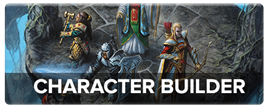
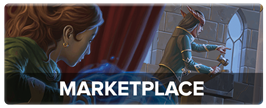
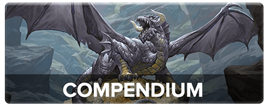
-
View User Profile
-
Send Message
Posted Sep 28, 2020Thank you!
-
View User Profile
-
Send Message
Posted Sep 28, 2020Question. If one of these guys has a heavy cloak that covers their entire body, blocking all light from hitting them, would they be able to teleport from underneath it if they pull the hood over their head to fully cover themself?
-
View User Profile
-
Send Message
Posted Sep 28, 2020Wow. That is genius, if you have a dm who allows it. I would not, probably, but it is up to your dm. I am actually playing a first-level monk, and I was planning to play way of shadow. Although, it is more night/wilderness-themed than shadows.
-
View User Profile
-
Send Message
Posted Sep 28, 2020This is Great! one of my favorite characters is an Eladrin Shadow Monk who got her powers fro the Unseele court, and was focused on teleporting. Bewtween that, bracers of defence, and the mobile feat she was unhittable. It was great
-
View User Profile
-
Send Message
Posted Sep 28, 2020thank you so much, i have a player who is going to play a way of the shadows monk for an intrigue, stealth and assassination (with a side of rebellion) but i'm worried i won't be able to use the abilities to there best advantage. Do you have any tips.
-
View User Profile
-
Send Message
Posted Sep 28, 2020Gotta say, I like the story included with this guide. Are those stories from a book, from somewhere else or made up specifically for guides like this?
-
View User Profile
-
Send Message
Posted Sep 28, 2020Yeah, the ones in the players handbook are in books, i think.
-
View User Profile
-
Send Message
Posted Sep 28, 2020James said on a previous one he writes them all himself
-
View User Profile
-
Send Message
Posted Sep 28, 2020The story segments of Class 101 articles are all written by me. If there are any that aren't (such as the Battlerager barbarian excerpt), they're clearly sourced. All of the story segments in the Player's Handbook, etc., are sourced in this way.
-
View User Profile
-
Send Message
Posted Sep 28, 2020What about Shadow Monks as caster killers?
They can teleport into the back lines, drop silence, and any spells with a verbal component are shut down. Darkness does the same with any spells requiring a visible target. Pair that with sentinel, and you can pin them in place.
-
View User Profile
-
Send Message
Posted Sep 28, 2020Whoa, that's awesome.
I'm DMing a campaign for four people and they said for me to make a bunch of characters for them to choose from, and one of them is a Lightfoot Halfling monk I named Sharla Shadowquick. I intended her for the Way of Shadows, but is that beginner-friendly? We're all pretty new to D&D, so I would like some advice.
-
View User Profile
-
Send Message
Posted Sep 28, 2020You could maybe allow it on the basis that the cloak wouldn't go with you, as it's the cause of the shadow, so needs to remain to maintain it long enough for you to leave, i.e- it'd be a single use thing handy for getting that first teleport in for a fight. Is it abusable? Possibly, but then in the worst case you're only really saving them a Ki point to Disengage and zoom over to a different area of shadow to teleport from instead.
-
View User Profile
-
Send Message
Posted Sep 28, 2020Would they be starting from level one? Monks get a lot of great abilities really early, and balancing Ki and when to use it can be challenging, as it's very fundamental to being a Monk; but if you start from level one it should ease them in nicely, as they get to attack twice straight away (once unarmed, once unarmed or with a weapon) and they don't get access to other stuff competing for their bonus action until level two.
If starting from level three (to start with Way of Shadow) they'll be getting a lot of cool abilities all at once so it might be a little overwhelming at first, but I don't think it's especially beginner unfriendly; personally when I play a Monk I mostly just start by going with whatever feels coolest in any given turn, then later on settle into the balance between conserving Ki and doing cool Monk nonsense that requires it (though there's plenty that doesn't too).
-
View User Profile
-
Send Message
Posted Sep 28, 2020I like the Cloak and Dagger concept!
-
View User Profile
-
Send Message
Posted Sep 28, 2020I am so glad they have stopped screaming ICEWIND DALE BUY IT IT IS FUN...
-
View User Profile
-
Send Message
Posted Sep 28, 2020I love the Shadow Monk but am I the only one who thinks there level 17 ability is kind of garbage compared to other level 17 abilities?
-
View User Profile
-
Send Message
Posted Sep 28, 2020By default, no, since they're wearing the cloak. You'd need a tent to really accomplish that.
-
View User Profile
-
Send Message
Posted Sep 28, 2020It wasn't mentioned in here, but if you're looking to multiclassing then Rogue can make a really solid option, since you can very easily get the advantage needed to take advantage of sneak attack without need of an ally, just in the event that you do solo infiltrate somewhere.
-
View User Profile
-
Send Message
Posted Sep 28, 2020Class 101 is my personal favorite of all these posts. My players often become overwhelmed by how to use their subclasses efficiently, and this thread has helped my druid and artificer especially. Keep up the good work!
-
View User Profile
-
Send Message
Posted Sep 28, 2020You beat me to the question. Micrard